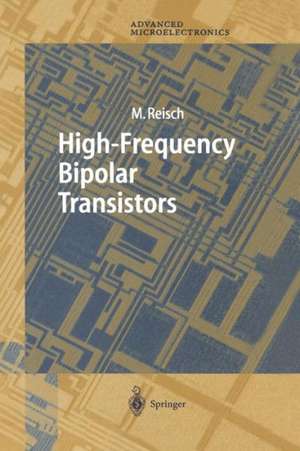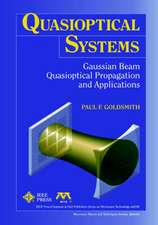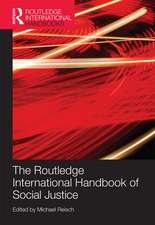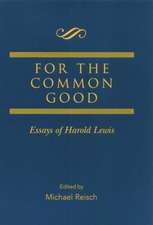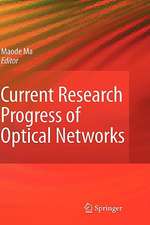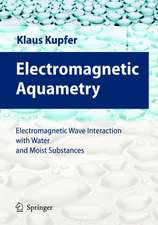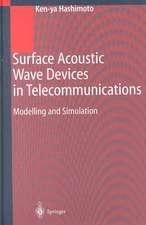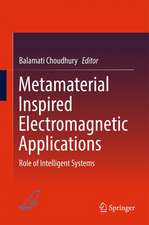High-Frequency Bipolar Transistors: Springer Series in Advanced Microelectronics, cartea 11
Autor Michael Reischen Limba Engleză Paperback – 21 oct 2012
| Toate formatele și edițiile | Preț | Express |
|---|---|---|
| Paperback (1) | 1229.38 lei 6-8 săpt. | |
| Springer Berlin, Heidelberg – 21 oct 2012 | 1229.38 lei 6-8 săpt. | |
| Hardback (1) | 1233.79 lei 6-8 săpt. | |
| Springer Berlin, Heidelberg – 5 mar 2003 | 1233.79 lei 6-8 săpt. |
Din seria Springer Series in Advanced Microelectronics
- 15%
 Preț: 645.79 lei
Preț: 645.79 lei - 24%
 Preț: 1571.35 lei
Preț: 1571.35 lei - 18%
 Preț: 951.59 lei
Preț: 951.59 lei - 20%
 Preț: 645.31 lei
Preț: 645.31 lei - 15%
 Preț: 643.34 lei
Preț: 643.34 lei - 18%
 Preț: 1007.35 lei
Preț: 1007.35 lei - 15%
 Preț: 641.03 lei
Preț: 641.03 lei - 18%
 Preț: 954.45 lei
Preț: 954.45 lei - 15%
 Preț: 641.20 lei
Preț: 641.20 lei - 18%
 Preț: 1842.94 lei
Preț: 1842.94 lei - 15%
 Preț: 639.84 lei
Preț: 639.84 lei - 18%
 Preț: 1051.98 lei
Preț: 1051.98 lei - 18%
 Preț: 955.70 lei
Preț: 955.70 lei - 18%
 Preț: 953.82 lei
Preț: 953.82 lei - 15%
 Preț: 638.24 lei
Preț: 638.24 lei - 18%
 Preț: 1110.55 lei
Preț: 1110.55 lei -
 Preț: 387.20 lei
Preț: 387.20 lei - 15%
 Preț: 642.68 lei
Preț: 642.68 lei - 18%
 Preț: 956.81 lei
Preț: 956.81 lei - 15%
 Preț: 642.03 lei
Preț: 642.03 lei - 18%
 Preț: 947.35 lei
Preț: 947.35 lei - 18%
 Preț: 955.88 lei
Preț: 955.88 lei - 15%
 Preț: 632.70 lei
Preț: 632.70 lei - 18%
 Preț: 936.95 lei
Preț: 936.95 lei - 18%
 Preț: 946.87 lei
Preț: 946.87 lei - 18%
 Preț: 1559.80 lei
Preț: 1559.80 lei - 15%
 Preț: 638.43 lei
Preț: 638.43 lei
Preț: 1229.38 lei
Preț vechi: 1499.24 lei
-18% Nou
Puncte Express: 1844
Preț estimativ în valută:
235.24€ • 256.33$ • 198.23£
235.24€ • 256.33$ • 198.23£
Carte tipărită la comandă
Livrare economică 24 aprilie-08 mai
Preluare comenzi: 021 569.72.76
Specificații
ISBN-13: 9783642632051
ISBN-10: 364263205X
Pagini: 680
Ilustrații: XX, 658 p.
Dimensiuni: 155 x 235 x 36 mm
Greutate: 0.93 kg
Ediția:Softcover reprint of the original 1st ed. 2003
Editura: Springer Berlin, Heidelberg
Colecția Springer
Seria Springer Series in Advanced Microelectronics
Locul publicării:Berlin, Heidelberg, Germany
ISBN-10: 364263205X
Pagini: 680
Ilustrații: XX, 658 p.
Dimensiuni: 155 x 235 x 36 mm
Greutate: 0.93 kg
Ediția:Softcover reprint of the original 1st ed. 2003
Editura: Springer Berlin, Heidelberg
Colecția Springer
Seria Springer Series in Advanced Microelectronics
Locul publicării:Berlin, Heidelberg, Germany
Public țintă
ResearchCuprins
1. An Introductory Survey.- 1.1 History.- 1.2 Devices, Circuits, Compact Models.- 1.3 Semiconductors.- 1.4 PN Junctions.- 1.5 Bipolar Transistor Principles.- 1.6 Elementary Large-Signal Models.- 1.7 Elementary Small-Signal Models.- 1.8 Noise Modeling.- 1.9 Orders of Magnitude.- 1.10 References.- 2. Semiconductor Physics Required for Bipolar-Transistor Modeling.- 2.1 Band Structure.- 2.2 Thermal Equilibrium.- 2.3 The Boltzmann Equation.- 2.4 The Drift-Diffusion Approximation.- 2.5 Hydrodynamic Model.- 2.6 Generation and Recombination.- 2.7 Heavily Doped Semiconductors.- 2.8 Silicon Device Modeling in the Drift-Diffusion Approximation.- 2.9 References.- 3. Physics and Modeling of Bipolar Junction Transistors.- 3.1 The Regional Approach.- 3.2 Transfer Current, Early Effect.- 3.3 Emitter-Base Diode, Current Gain.- 3.4 Base-Collector Diode, Breakdown.- 3.5 Charge Storage, Transit Time.- 3.6 Series Resistances.- 3.7 High-Level Injection.- 3.8 The Gummel-Poon Model.- 3.9 Small-Signal Description.- 3.10 Figures of Merit.- 3.11 Temperature Dependences, Self-Heating.- 3.12 Parameter Extraction — DC Measurements.- 3.13 Parameter Extraction — AC Measurements.- 3.14 The VBIC Model.- 3.15 The HICUM Model.- 3.16 The MEXTRAM Model.- 3.17 References.- 4. Physics and Modeling of Heterojunction Bipolar Transistors.- 4.1 Heterojunctions.- 4.2 Heterojunction Bipolar Transistors.- 4.3 Silicon-Based Semiconductor Hctorostructures.- 4.4 SiGe HBTs.- 4.5 Compound Semiconductor HBTs.- 4.6 References.- 5. Noise Modeling.- 5.1 Noise in Semiconductors.- 5.2 Transport Theory of Noise.- 5.3 Noise of pn Junctions.- 5.4 Noise Generated by the Transfer Current.- 5.5 High-Frequency Noise Equivalent Circuit.- 5.6 Noise Figure.- 5.7 Low-Frequency Noise.- 5.8 References.- 6. Basic CircuitConfigurations.- 6.1 Common-Emitter Configuration.- 6.2 Common-Collector Configuration.- 6.3 Common-Base Configuration.- 6.4 The Diode-Connected Bipolar Transistor.- 6.5 Current Sources and Active Loads.- 6.6 Differential Amplifiers.- 6.7 Analog Multipliers.- 6.8 Two-Transistor Amplifier Stages.- 6.9 Bandgap References.- 6.10 Digital Circuits.- 6.11 References.- 7. Process Integration.- 7.1 Fabrication of Integrated npn Transistors.- 7.2 Passive Components.- 7.3 PNP Transistors.- 7.4 Reliability.- 7.5 References.- 8. Applications.- 8.1 Emitter-Coupled Logic.- 8.2 High-Speed Optical Transmission Systems.- 8.3 RF Microelectronics.- 8.4 BiCMOS.- 8.5 References.- A. Linear and Nonlinear Response.- A.1 Linear Response.- A.1.1 Step Response, Elmore Delay.- A.2 Nonlinear Systems Without Memory.- A.2.1 Harmonic Distortion, Gain Compression.- A.2.2 Intermodulation Distortion.- A.3 Nonlinear Systems with Memory.- A.3.1 Volterra Series.- A.4 References.- B. Linear Two-Ports, s-Parameters.- B.1 Indefinite Admittance Matrix.- B.2 Terminated Two-Ports.- B.2.1 Input and Output Impedance.- B.2.2 Voltage and Current Gain.- B.2.3 Power Gain.- B.2.4 Stability.- B.2.5 Incident and Reflected Power.- B.3 S-Parameters.- B.3.1 Relations between s-Parameters and Two-Port Parameters.- B.3.2 Matching and Power Gain.- B.4 References.- C. PN Junctions: Details.- C.1 Boundary Conditions at PN Junctions.- C.2 Epitaxial Diode.- C.3 Minority-Carrier Transport in Heavily Doped Emitter Regions.- C.4 High-Frequency Diode Admittance.- C.5 References.- D. Bipolar Transistor: Details.- D.1 Drift Transistor.- D.1.1 Electron Transport Through the Base Region.- D.1.3 Excess Phase.- D.1.4 Collector Transit Time.- D.1.5 Small-Signal Analysis.- D.2 Quasi-Thrce-Dimensional Computations of the Base Resistance.- D.3Generation of Model Parameters from Layout Data.- D.4 Generalization of the Gummol Transfer Current Relation to Arbitrary Geometries.- D.5 Definition of Series Resistances Within the Integral Charge Control Relation.- D.6 Multiplication Factor.- D.7 References.- E. Noise: Details.- E.1 Some Statistics.- E.1.1 Stochastic Variables, Correlation.- E.1.2 Ensemble Average, Distribution Function.- E.1.3 Spectral Density.- E.1.4 Carson Theorem, Shot Noise.- E.2 Velocity Fluctuations and Diffusion.- E.3 Thermodynamics and Noise.- E.4 Generation-Recombination Noise.- E.5 McWorther Model of 1/f Noise.- E.6 Short-Base Diode with Metal Contact.- E.7 Short-Base Diode with Polysilicon Contact.- E.8 Equivalent-Circuit Representation of Transfer Current Noise.- E.9 References.- F. Overtemperature Developed During Electrostatic Discharges.- F.1 Thermal Conductivity.- F.2 Transient Overtemperature During a Short Pulse.- F.3 References.
Textul de pe ultima copertă
The book gives a detailed presentation of high-frequency bipolar transistors in silicon or silicon-germanium technology with particular emphasis given to todays advanced compact models and their physical foundations. The first part introduces the fundamentals of bipolar transistors on a graduate student level. The second part considers the physics and modeling of bipolar transistors in detail. Part 3 describes basic circuit configurations, aspects of process integration and applications.
Caracteristici
Hot topic in modern microelectronics Fast single and integrated transistors as well as integrated bipolar circuits are treated Includes supplementary material: sn.pub/extras
